The land of Gujarat whispers stories through its diverse arts and crafts. Within its borders lie variegated communities whose existence is intertwined with their unique artistic expressions, yet some are perilously close to extinction. The inclusivity, earthiness, and vibrant colours of this land and its crafts are so enchanting that it becomes essential to spotlight Gujarat when discussing the rich cultural and aesthetic traditions of India. Let us delve into the fascinating world of Gujarat’s arts and crafts:
1. Lippan Work
Lippan kaam is a form of mud work that has its origin in the sandy and marshy terrains of Kutch. Traditionally, it has been used to decorate walls, doorways, and even ceilings of huts. If you explore the picturesque Rann of the Kutch you will come across charming mud houses or bhungas adorned with exquisite mirrors and clay designs. Like all traditional arts and crafts of India, Lippan is not done for just aesthetic purposes. The Lippan clad walls act as insulators, protecting the people within the house from the harsh summer heat. Depending on the communities practising the craft, Lippan designs often feature geometric designs and motifs such as elephants, camels, and village women. The Rabari and Ahir communities, known for their nomadic lifestyles, incorporated mirrors extensively into these mud designs. These lovely mirror motifs, considered sacred, are believed to ward off evil spirits and also bring light into homes. It would be erroneous on our part to think of Lippan as merely a fusion of mud and mirrors. Lippan is replete with motifs, and these motifs have their own meanings. Case in point: the circular patterns; circles represent the cycle of life and the eternal nature of the universe simultaneously. Similarly, the lovely peacock designs stand for prosperity, abundance and good fortune.The simple yet structured geometric patterns indented in the craft of Lippan, made using clay and camel dung, underscore the importance of Gujarat’s cultural heritage.
2. Mata Ni Pachedi
The unique term Mata Ni Pachedi literally translates to “behind the goddess,” and typically features a striking image of Goddess Durga in the central space of the cloth. Due to restrictions on entering temples, the Vaghari community of Gujarat crafted makeshift shrines on cloth featuring Goddess Durga. The image of Devi or Shakti is often seen surrounded by deities, animals, and nature. Shakti is the complete version of Adi- Shakti. Her three forms come to the forefront in the popular narrative: Mahalaxmi, the Goddess of power, wealth, fortune, fertility; Mahakali, the Goddess of time and death; and Mahasaraswati, the Goddess of wisdom, knowledge, music and learning. Vagharis also worship other local goddess to protect them from specific afflictions. Shitala Mata, for the protection against smallpox, Hadkai Mata, for the prevention against rabies. Originally, Mata-Ni Pachedi illustrations were created using natural red and black dyes, adding to the organic and traditional feel of this beautiful art form. Once, Mata Ni Pachedi also involved the usage of gold and silver metals. A singular block is not employed in the creation of deities like Mata in this art. Instead, separate blocks for different parts, such as hand, head, and, body are assembled to form the complete deity.
3. Meenakari

This age-old art of Meenakari or Minakari, spans a myriad range of items, from jewellery to tableware. Meenakari or Minakari is a traditional metalworking that involves creating sophisticated metal designs adorned with enamel. The term minakari is derived from the Persian words, mina, and kari, which mean heaven and craftsmanship respectively. Legend holds that Raja Man Singh of Amber extended an invitation to the skilled meenakari craftsmen from the Mughal atelier at Lahore to Gujarat forging a cultural bridge that brought the art of Meenakari to the vibrant landscapes of Gujarat. The Meenakari art form was brought to Rajasthan in the 16th century. Copper, iron, silver, and alloys are some of the commonly used metals in Minakari. These polished, vibrant works of Meenakars are indeed heavenly to look at!
4. Zardozi
Zardozi, an elegant embroidery originating in Persia, was brought to India in a bygone era, marking the inception of a craft with a deep and storied past. Quite like the word Meenakari, the word zardozi is a combination of two words, zar meaning gold and dozi meaning embroidery, highlighting the importance of metallic elements in this craft. The artisans of Surat districts deserve due respect for the kind of finesse they put into this art. During the Mughal era, Zardozi embroidery was adopted by royalty to decorate their tent walls with splendid tapestries and hangings. The design is formed with the help of metallic wires, while the thread is merely used to sew the elements together. Sequins, beads, pearls, and precious stones are also incorporated to create elaborate patterns.
5. Patan Patola
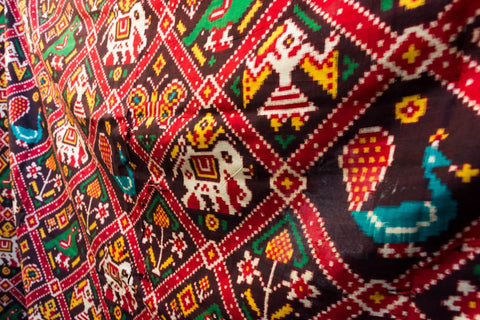
Patan Patola, a highly valued and luxurious double ikat woven textile, is a matter of pride for the Patan district of Gujarat. The luxurious Patola silk saree is made by meticulously dyeing and weaving silk threads with great care and precision. The process of individually dying each strand is time-consuming, with one saree taking anywhere from six months to a year to complete. The designs range from animal forms to human figures. For instance- Popat Kunjar Bhat stands for elephant and parrot motif, while Maharas Bhat depicts the motif of women rhythmically dancing with sticks in their hands. It would not be wrong to say Patan Patola has etched its name in history. There is a recorded history of tales, myths, songs, and stories surrounding Patola. It is believed that Moroccan traveller Ibn Batuta gifted Patola fabric to the kings of the kingdoms he visited.
6. Rogan Art
The term Rogan originates from Persian, signifying oil or varnish. This terminology was adopted during the Mughal reign. Even though this Persian technique came to Kutch around 400 years ago, it still developed as a completely indigenous technique, different from crafts in different parts of the world. Interestingly, Rogan art unfolds purely by hands without the use of any blueprint or reference! A mirror image is then transferred to the other side, creating a lovely symmetry. Another intriguing part of the Rogan art is that the metal pin guiding the viscous paint never touches the cloth. This meticulous work of art, requiring a considerable time for completion, is practised by the Khatri community in the quaint Nirona village of Kutch. Oil-based pastes of yellow, red, green, white, orange, black are kept in earthen pots with water to keep them moist. Traditionally, Rogan embroidery embellished bridal attires, odhinis, ghagras. The introduction of modern textile machinery has placed this art on the brink of extinction.
7. Bandini
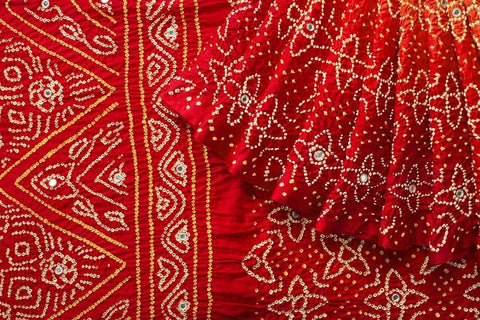
The tie-dye textile technique of Bandhani or Bandhej or Bandhni has been in practice in the state of Gujarat as far back as the 12th century. Visual references to Bandhani have also been found in the cave paintings of Ajanta and Bagh. The intricate process of creating Bandhani patterns involves tying knots at varied lengths and shapes in a textile prior to dyeing. This results in the creation of designs and patterns which are quite liked and readily worn by men and women alike. The Ahmedabad city of Gujarat is famous for Bandhani designs. Today, colourful Bandhanis are being sold all over India and its demand has increased with time. Bandhani patterns incorporate a diverse array of motifs, ranging from geometrical patterns, and flowers, to richly woven folklores and cultural symbols specific to the region.
8. Ajrakh

In terms of origin, Ajrakh is a form of block-printing found in the Sindh region of present day India and Pakistan. It is believed to have existed as far back as 3000 BCE. This delicate block printing technique, which found its way to the lap of the Kutch region of Rajasthan, is a blend of culture and tradition. Ajrakh’s flexibility comes to the forefront with its application on various textiles, such as sarees, dupattas, and basic cloth. The nomenclature of Ajrakh originates from ‘azrak’, meaning indigo, with indigo being the most commonly used dye in this textile art. Traditionally, Ajrakh prints have consisted of three colours: blue, symbolising sky; red, representing the land and fire; and white, signifying the stars.
9. Rabari Embroidery

The nomadic Rabari community of Gujarat has made a lasting impression on the world of textile with their breathtaking embroidery. The Rabari men can be commonly seen wearing kediya or Kediyu (an upper garment) along with dhoti and a pagadi (turban), all in white colour and typically crafted from cotton. Similarly, Rabari women can be observed donning embroidered kapdu (blouse), ghaghro (skirt), and chundri (scarf), gracefully covering their heads. Geometric patterns, floral designs, animal and bird motifs along with elements of mythology and daily life are some of the recurrent patterns embedded in their embroidery works.These hand made embroidery designs demand a careful attention to details. Like many traditional crafts, the Rabari community and its embroidery has been facing many modern-day challenges.
10. Bhujodi weaving

Kutch is a haven for artisans and weavers, and one of the most fascinating weaving craft you will find there is Bhujodi. To withstand the unforgiving winters of the sandy terrains, artisans craft an array of shawls, stoles and carpets here, and to top it off, the delightful touch of Bhujodi embroidery adds an extra layer of warmth and charm! It is said that the Vankars (weaver community) of Bhujodi in Kutch are originally the Marwada weavers of the Meghwal community in Rajasthan, who migrated to Kutch more than 500 years ago.
11. Pithora painting

The tradition of creating colourful artwork on walls, floors, and courtyards has still been kept intact by the Rathwa communities of Gujarat, Madhya Pradesh, and Chattisgarh. It is believed to have originated in the 11th century. The mud-plastered walls or the lime-washed floors are the typical mediums used for creating Pithora paintings. Purvaj na Panch Ghoda or ‘five horses of ancestors’ is a painting of a special importance. Baba Ind, Pithori Rani, Baba Pithora (the primary god of Rathwa), Rani Kajal (kuldevi or goddess of the clan), are among the chief pantheon of deities that are featured in the Pithora paintings. Other common motifs include fields, trees, birds, moon, sun and various other nature-inspired elements. Following the completion of a Pithora painting, Lakhada or the Pithora painters, along with their kin, engage in a joyous celebration accompanied by singing and dancing.
12. Beadwork
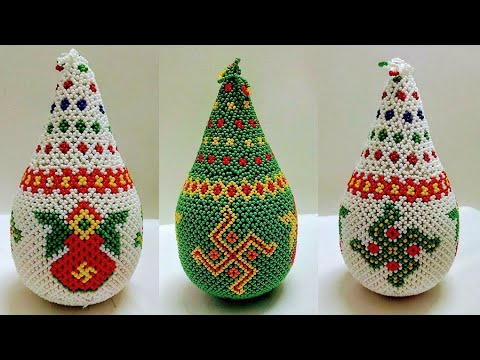
Intricately crafted on a pristine, white background, the beadwork of Gujarat boasts vibrant colours and patterns that capture the eye! Artisans of Saurashtra, Vadodara, Dahod, Cambay have mastered the art of creating decorative and auspicious artefacts like beadwork “torans”(welcoming friezes), and “loti nariyal” ( kalash holding sacred coconut) using multi-colored beads, adding a touch of richness to their creations. Undoubtedly, these moti bharat or beadworks are used in making stunning jewellery items as well.
13. Wood - Carvings
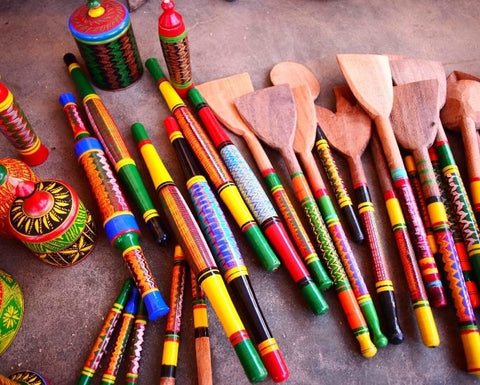
Did you know, Gujarat served as the primary hub of woodcarving in India, dating back to at least the 15th century? Timber was frequently used to give strength and stability to multi-storeyed houses in the past. Even today, in some of the old and relatively undisturbed towns of Gujarat, majority of the residents reside in wooden houses.The lacquered woodwork of the northern Kuch is deftly executed by the semi-nomadic community known as the Vadha community. It shares its motifs and techniques with regions of Rajasthan and Sindh. The range of these lively woodworks comprises, kitchen utensils, container, door frames, cradles, and more.
14. Clay Craft
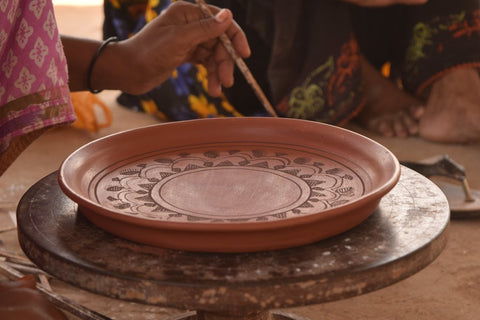
Earthen potteries and plates are not just organic utensils; they’re a testament to humble traditions. The Khavada pottery of Gujarat encapsulates age-old simplicity and beauty. The potters of Gujarat are renowned for rendering designs, shapes and patterns into their earthen wares employing natural elements such as clay, stones, leaves etc. The Bhil tribe, and the Garasia tribe are some of the indigenous communities of Gujarat who have a longstanding association with the craft of pottery. Handmade terracotta figures and toys are some of the other creations crafted by these communities.
Gujarat is a treasure trove of colours, crafts and cultures. From the bustling streets to the tranquil villages where artisans work their magic, Gujarat has a charm that’s hard to resist.
- Sariya, Tasneem. “Handicrafts from Gujarat with Strong-Rooted Traditional Essence.” Caleidoscope, July 14, 2022. https://www.caleidoscope.in/art-culture/handicrafts-from-gujarat.
- “10 Famous Famous Art & Crafts from Gujarat.” Gaatha, August 3, 2022. https://shop.gaatha.com/%20famous-Art-crafts-Gujarat.
- “Mata Ni Pachedi~Ahmedabad: Research on Indian Handicrafts & Handloom.” Craft Archive | Research on Indian Handicrafts & Handloom - Indian Craft online, March 29, 2022. https://gaatha.org/Craft-of-India/research-mata-ni-pachedi-ahmedabad/.
- “All You Need to Know All about Pithora Paintings.” Zee Zest, February 12, 2024. https://zeezest.com/culture/all-you-need-to-know-all-about-pithora-paintings-3016.
- About Pithora paintings - eSamskriti. Accessed February 14, 2024. https://www.esamskriti.com/e/Culture/Indian-Art/About-Pithora-Paintings-1.aspx.
- “Lippan Art: A Journey through Culture, Symbols, Sustainability, and Empowerment.” Authindia, October 1, 2023. https://authindia.com/lippan-art-a-journey-through-culture-symbols-sustainability-and-empowerment/.
- “Pithora Paintings.” Story of Indian crafts and craftsmen, February 18, 2010. https://gaatha.com/pithora-paintings/.
- “Rogan Art : The Exquisite Art of Cloth Printing Caleidoscope: Indian Culture, Heritage.” Caleidoscope, December 16, 2022. https://www.caleidoscope.in/art-culture/rogan-art.
- “What Is Rogan Art?” Arts India. Accessed February 14, 2024. https://www.artsindia.com/blogs/news/what-is-rogan-art.
- “Pithora, the Art Ritual of Rathwa People.” MAGIK INDIA, January 8, 2024. https://magikindia.com/en/pithora-the-art-ritual-of-rathwa-people/.
- Chaturvedi, Dipti. “A study on traditional Rogan art of India”, June 14, 2022.
- “What Is Bandhani?” The Craft Atlas, May 5, 2023. https://craftatlas.co/crafts/bandhani.
- “Bandhani: The Oldest Tie-Dye Technique in India - Times of India.” The Times of India. Accessed February 14, 2024. https://timesofindia.indiatimes.com/life-style/fashion/style-guide/bandhani-the-oldest-tie-dye-technique-in-india/articleshow/100642142.cms.
- “The Traditional Art of Bandhani.” Sundari Silks, February 2, 2024. https://www.sundarisilks.com/blogs/article/the-traditional-art-of-bandhani.
- “How Ajrakh’s Rising Demand Has Changed the Dynamics of the Tradition behind the Art.” The Wire. Accessed February 14, 2024. https://thewire.in/the-arts/ajrakh-crafts-rising-demand-gujarat-bhuj-kutch.
- Khatri, Bhawani. “Ajrak.” Story of Indian crafts and craftsmen, January 8, 2010. https://gaatha.com/ajrak/.
- “Beadwork of Gujarat.” IndiaUnveiled. Accessed February 14, 2024. https://www.indiaunveiled.in/subartscrafts/beadwork-gujarat.
- “Glass Bead Craft of Gujarat.” Asia InCH – Encyclopedia of Intangible Cultural Heritage. Accessed February 14, 2024. https://asiainch.org/craft/glass-bead-craft-of-gujarat/.
- Bajpai, Suman. “Gujarat’s Artisanal Woodcraft.” India Currents, April 15, 2022. https://indiacurrents.com/gujarats-artisanal-woodcraft/.
- “Gujarāt Woodwork.” Encyclopædia Britannica. Accessed February 14, 2024. https://www.britannica.com/art/Gujarat-woodwork.
- “Wood Carvings of Gujarat.” INDIAN CULTURE. Accessed February 14, 2024. https://indianculture.gov.in/ebooks/wood-carvings-gujarat.
- “The Rabaris: The Nomadic Pastoral Community of Kutch.” Sahapedia. Accessed February 14, 2024. https://www.sahapedia.org/the-rabaris-the-nomadic-pastoral-community-of-kutch.
- Chandrashekhar, Mala. “Gujarat’s Rabari Community: A Kaleidoscope of Artistry – the Exquisite Tribal Embroidery.” The Cultural Heritage of India. Accessed February 14, 2024. https://cultureandheritage.org/2023/05/gujarats-rabari-community-a-kaleidoscope-of-artistry-the-exquisite-tribal-embroidery.html.
- “Weaving~Bhujodi - Craft Archive: Research on Indian Handloom.” Craft Archive | Research on Indian Handicrafts & Handloom - Indian Craft online, March 28, 2022. https://gaatha.org/Craft-of-India/bhujodi-weaving-kutch/.
- “Heritage Textiles from Bhujodi, Gujarat - Google Arts & Culture.” Google. Accessed February 14, 2024. https://artsandculture.google.com/story/8AWxydXbzHybIw.
- Mokashi, Akshata. “Bhujodi Weaving: A Unique Kutchi Art.” PeepulTree, March 12, 2021. https://www.peepultree.world/livehistoryindia/story/living-culture/bhujodi-weaving.
- Roy, Shrutika. “Clay Craft of Gujarat: An Imperative Pottery Handicraft.” inGujarat.in, August 17, 2020. https://ingujarat.in/culture/clay-craft-pottery-of-gujarat/.
- Chandrashekhar, Mala. “Tribal Pottery of Gujarat: The Exquisite Craftsmanship of the Bhil and Garasia Tribes.” The Cultural Heritage of India. Accessed February 14, 2024. https://cultureandheritage.org/2023/05/tribal-pottery-of-gujarat-the-exquisite-craftsmanship-of-the-bhil-and-garasia-tribes.html.






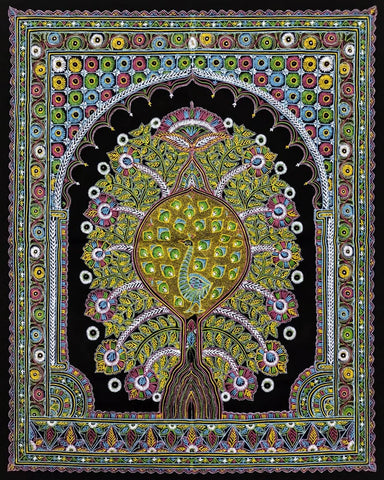










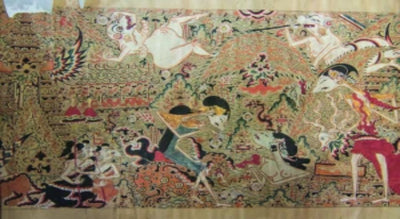
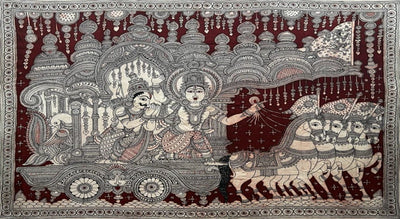

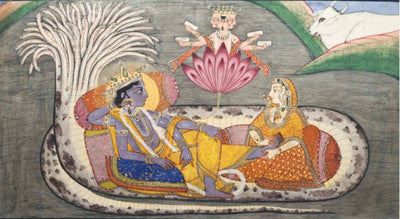
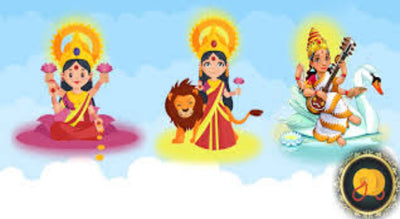
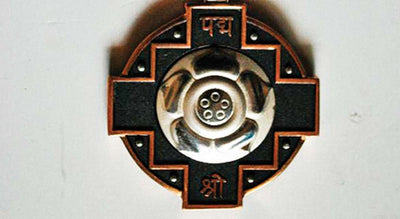
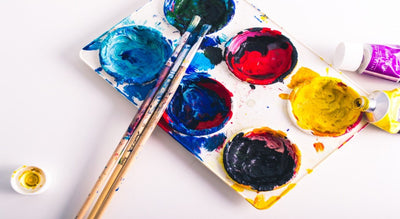
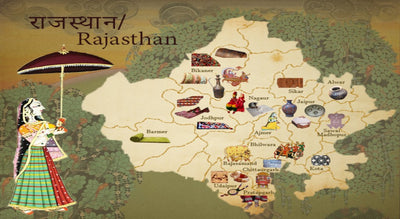
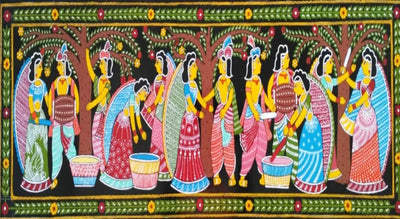
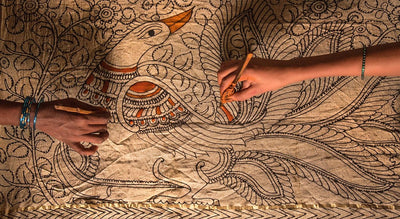
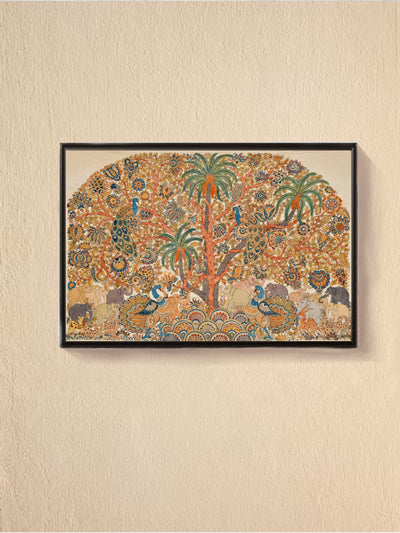







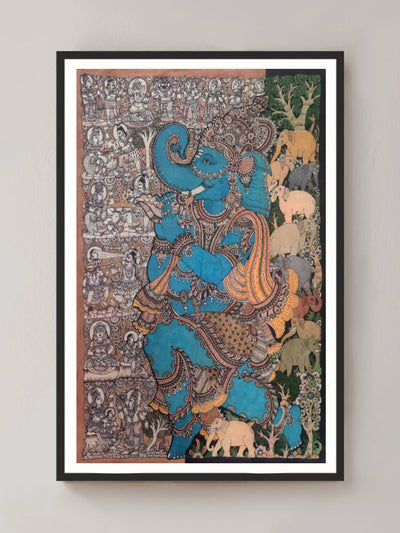








Wow. So many art forms in Gujrat. Lippan is the only one I am familiar with. I am also learning different art forms by watching online art courses by Penkraft. If anyone is interested, they have hundreds of art tutorials to learn at https://online.penkraft.in/ArtAttackHome. It is on a subscription basis so you can take it as per your convenience.